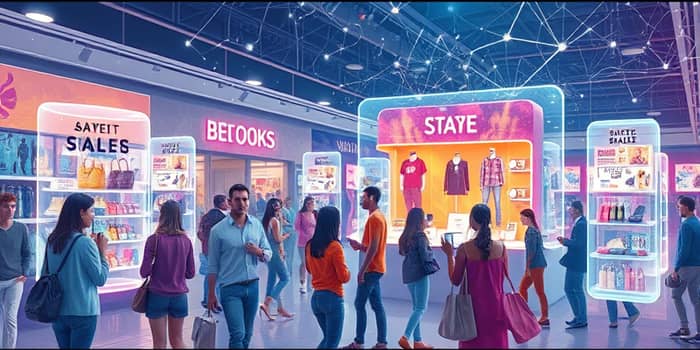
In an era defined by choice overload and ever-rising consumer expectations, personalization has emerged as the cornerstone of modern e-commerce. Shoppers no longer settle for generic catalogs; they demand tailored experiences that anticipate needs and celebrate individuality.
Machine learning is at the heart of this shift, enabling brands to harness vast troves of data and convert them into highly relevant interactions. From real-time recommendations to predictive insights, the technology is redefining how we buy—and how brands succeed.
Recent studies reveal that 47% to 76% of consumers now expect personalized interactions, making it a competitive necessity rather than a luxury. When executed effectively, personalization drives at least a 10% revenue increase, with some merchants reporting average revenue per user jumps of up to 166%.
Moreover, 90% of shoppers desire consistent, personalized experiences across all touchpoints. Retailers who satisfy this demand not only boost conversions but also cultivate brand loyalty, leading to repeat purchases and long-term growth.
Machine learning algorithms analyze browsing behavior, purchase histories, demographics, and real-time signals to craft bespoke experiences. Key applications include:
These capabilities work in concert to guide shoppers from discovery to checkout with minimal friction, elevating both satisfaction and average order values.
Understanding the scale and impact of AI-driven personalization requires a look at the numbers. Consider the following:
As personalization evolves, several emerging trends are poised to redefine e-commerce:
Together, these forces promise to deepen customer engagement and drive even greater ROI.
Leading brands are already reaping the benefits of machine learning–powered personalization. For example, The North Face leverages IBM Watson to deliver real-time, conversational product suggestions tailored to outdoor activities and personal style.
Burger King’s Million Dollar Whopper contest dynamically generated thousands of unique ads with AI, igniting consumer curiosity and boosting sales. Meanwhile, Microsoft Bing’s AI-driven search customizes results based on user history and location, improving relevance and engagement.
These examples underscore how innovative brands can create memorable, personalized journeys that resonate with each individual shopper.
Despite clear benefits, 96% of retailers face hurdles in rolling out effective personalization. Common obstacles include:
Data integration complexities—consolidating disparate systems and ensuring data accuracy.
Privacy and compliance—navigating GDPR, CCPA, and other regulations while maintaining trust.
Scaling AI systems—adapting machine learning models to handle growing traffic and diverse product catalogs.
Addressing these challenges often requires cross-functional collaboration, robust data governance, and ongoing optimization of AI pipelines.
Success metrics for personalization initiatives include:
Retailers who embrace personalization report halving new customer acquisition costs and observing positive ROI in four out of five cases.
Looking forward, personalization will continue to advance along several key dimensions. Predictive analytics and generative AI will converge to anticipate needs and craft hyper-relevant content. Meanwhile, cookieless tracking and privacy- first approaches will balance personalization with regulatory requirements.
Omnichannel harmony will allow shoppers to transition between devices and touchpoints seamlessly, while emerging technologies like augmented reality will layer interactive experiences on top of personalized recommendations.
Ultimately, the brands that thrive will be those that view personalization not just as a feature, but as a philosophy: one that recognizes every shopper as a unique individual deserving of tailored attention.
By embracing machine learning and prioritizing seamless personalized experiences, e-commerce leaders can forge deeper connections, unlock new revenue streams, and chart a course toward sustained growth in the digital age.
References













